Why all the foxes and red gates?
For centuries, visitors to Kyoto have been charmed—and possibly tired out—by climbing the stairs through the thousands of red torii gates to the top of Mount Inari on the grounds of the Fushimi Inari Grand Shrine, the ancient “Vatican” of more than 30,000 Inari shrines throughout Japan.
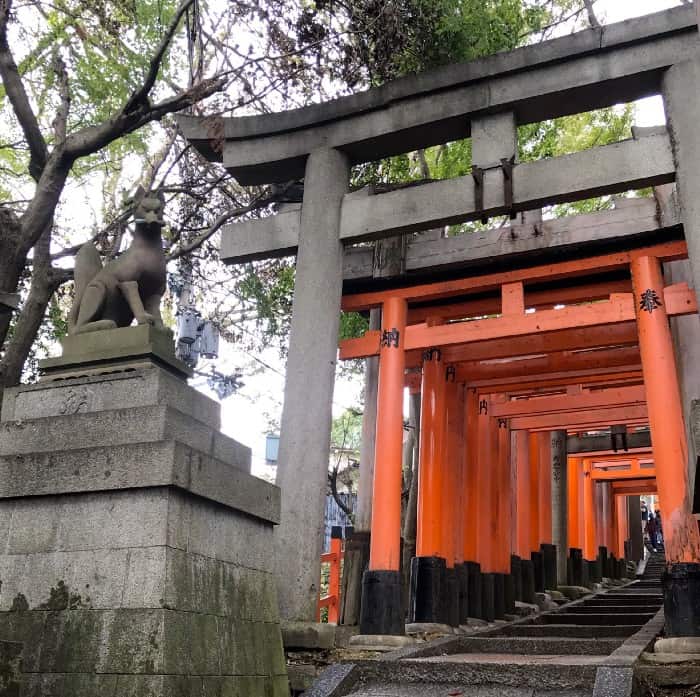
What is an Inari Shrine?
The name Inari comes from the Japanese word for rice plant, ina. Inari is a composite of the fox spirit, several gods of agriculture, and the goddess of foodstuff, Uka no Mitama. Inari shrines honor this combined deity.
Inari is one of the most widely venerated kami, divine beings, in the indigenous Japanese Shinto religion.
At the beginning of the 8th century, Mount Inari, in Kyoto, became the center of worship of the fox spirit, the protector of grains. People prayed at the mountaintop Inari shrine for bountiful harvests, rainfall to come or end, and for the country’s safety.
As the years passed, Inari’s portfolio grew, taking on success in sericulture (raising silkworms for the production of silk) during the Heian Era (794–1185) and success in business and swordsmithing during the Edo Era (1603–1867).
Today, Inari has become the guardian of household peace and prosperity, successful studies, finding a suitable spouse, improving skills in the performing arts, and more.
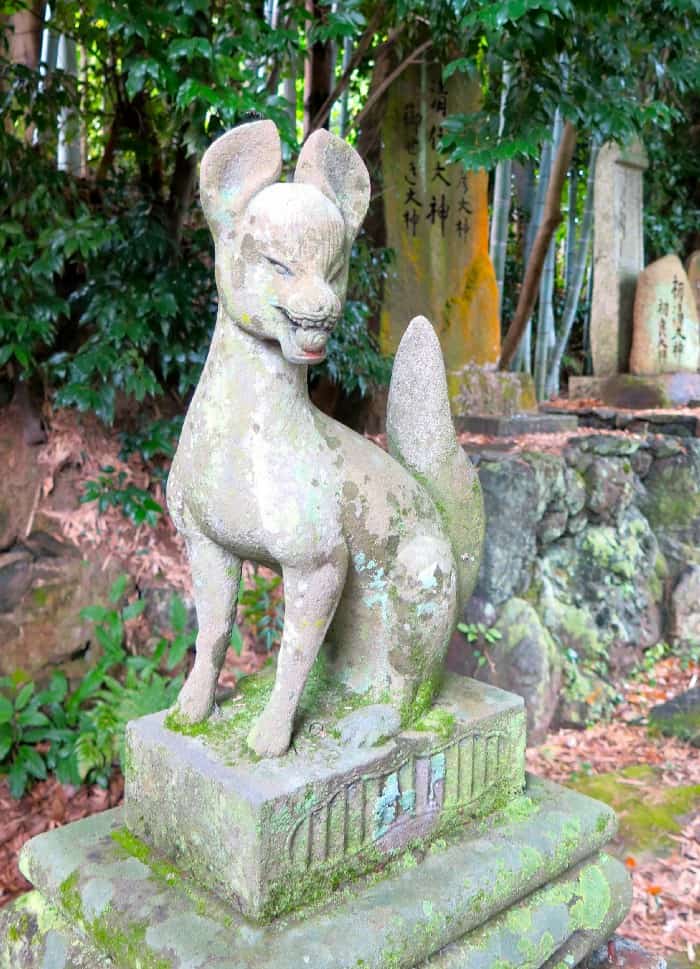
In the early 9th century, at the behest of the Buddhist monk, Kukai, the founder of Shingon Buddhism, the original Inari Shrine was moved to its current location at the foot of Mount Inari. It was soon elevated to the highest rank for Shinto shrines. There is still a small shrine at the top of the mountain, and many smaller shrines and stone offerings along the way up.
During the Edo Era (1603–1867), Inari’s popularity boomed, and thousands of local Inari shrines were built around the country as a place to pray for good harvests, protection, and business prosperity. These small shrines hold the same spiritual power as the Fushimi Grand Shrine in Kyoto.
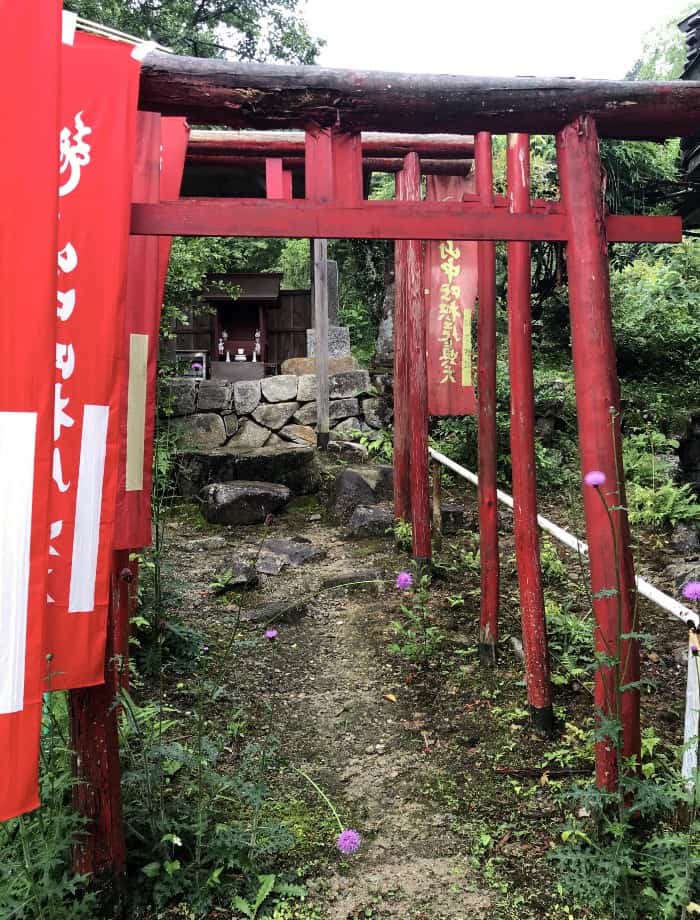
Why the red gates?
Just as Ema are hung at shrines in thanksgiving and as prayers, both Ema and red torii gates are offered at Inari Shines. Interestingly, the idea for the gates is said to come from a play on words, 通る, or tooru, which can mean passing through or coming to pass.
While tooru may sound a bit like torii, they are not related. The direct translation of torii is delightfully fitting, “bird residence,” 鳥居.
Donated torii gates are generally painted red or vermillion, which is the traditional color for warding off evil. Palaces, temples, and shrines were often painted this bright color. The vermillion originally used was made from mercury and this served the additional function of preserving the wood.
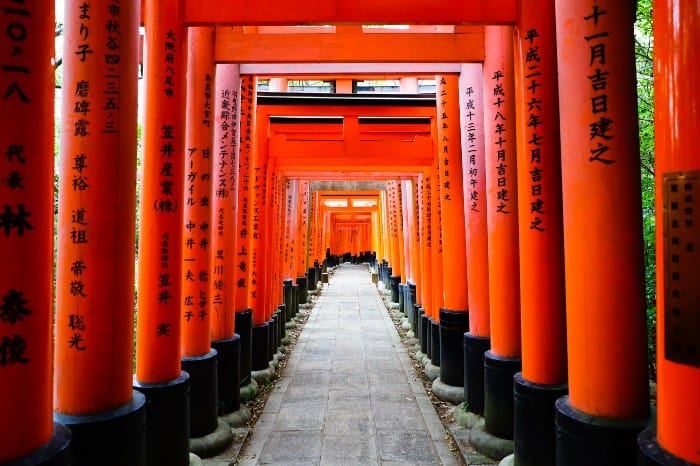
At Fushimi Inari Grand Shrine, the gates along the Senbon Torii, “The 1,000 Torii,” actually number in the 10,000s, each one with the name of its donor painted on it.
Foxes
Inari is a fox spirit, and his messengers are foxes, too. These white or translucent spiritual beings are called byakko, 白狐, literally “white fox.” They are shown as guardian statues at the shrines, sometimes holding a grainery key, scroll, or jewel in their mouths.
People often have small Inari shrines in their houses, where they give thanks to their personal Inari for his protection and help. And just as Jizo statues are sometimes dressed in red bibs as a token of reverence and care, so are many of the fox statues given bibs as a show of appreciation to Inari for his blessing and protection.
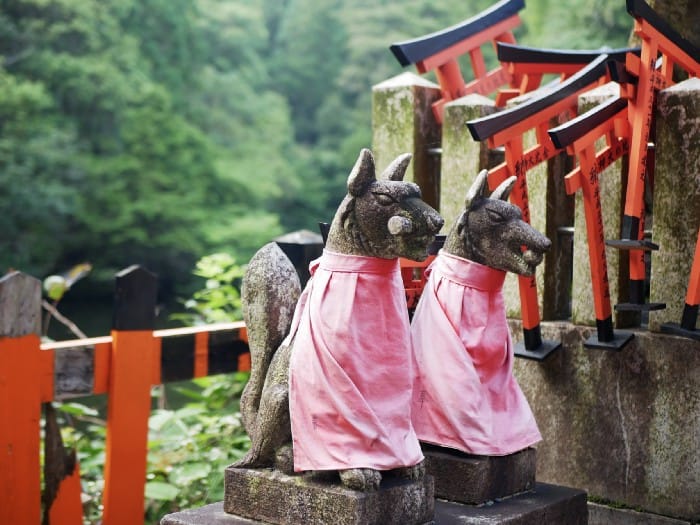
Stone Monuments
Along the way up Mount Inari behind the Fushimi Grand Shrine, there are thousands of stones carved with the personal names given to individuals’ or companies’ Inari. This practice started long ago, and it has become very popular in the last 100 years. In the 1920s there were 2,500 stones. Today, there are over 10,000.
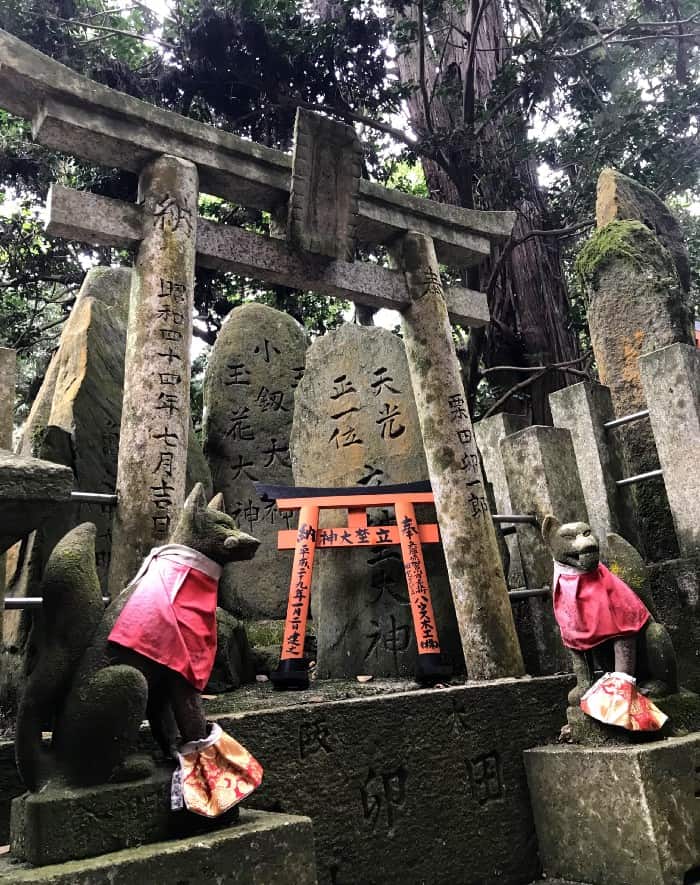
Inari Buddhist Temples?
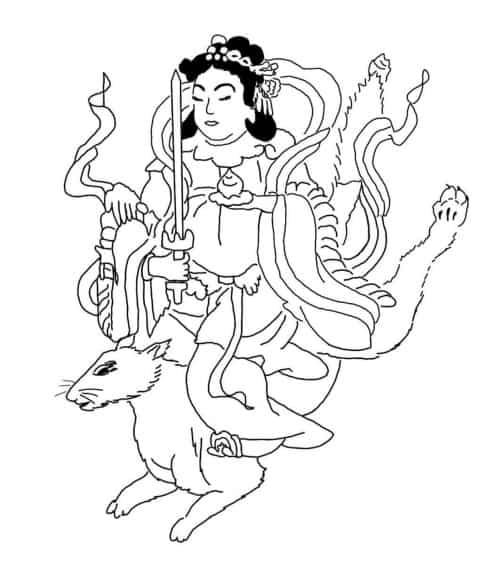
Although Inari is a Shinto kami, when Buddhism arrived in Japan in the 6th century, many believed the Buddhist deities to be the material manifestations of the local Shinto kami and the two religions grew to coexist peacefully.
Many Buddhist temples have Shinto guardians. In fact, Kukai, the monk mentioned above, adopted Inari as the guardian of his Shingon Buddhist Temple in Kyoto, Tōji.
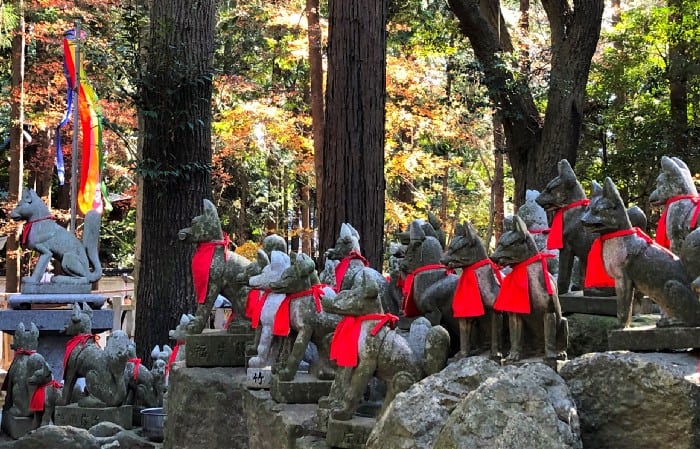
At the Toyokawa Temple in Aichi Prefecture, the Buddhist deity Dakini-ten, who is said to have come to earth riding on a white fox and carrying sheaves of grain, became syncretized with the Shinto deity Inari.
This rather unusual temple has, aside from temple buildings and Buddhist imagery, both a torii gate and thousands of fox statues. This synthesis of deities and religions, though striking many Westerners as odd, is in fact quintessentially Japanese.
Food of the gods?
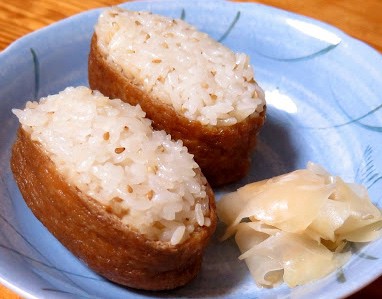
In ancient days, farmers were plagued by mice eating their all-important grain crops. They felt a great sense of gratitude towards the foxes who would eat the mice.
This reverence for foxes — with their grain-colored fur and whose tails were said to resemble sheaves of grain — laid the foundation for the worship of Inari.
To show their appreciation, farmers of bygone days would catch and fry mice and offer them as ceremonial gifts before the foxes’ burrows. This tasty dish was known as nezumi aburaage, fried mice, and was said to be a favorite food of foxes.
Along with the spread of Buddhism, a moral aversion to killing spread throughout the land. The practice of offering cooked mice was eventually replaced with the offering of fried thin tofu, aburaage.
From then on, aburaage has been a common offering at Inari shrines, and because of this history, it is a dish that foxes are said to love. Perhaps you have had inari sushi, or maybe kitsune-udon, a type of noodle soup upon which triangles of aburaage are placed.
Kitsune means fox.
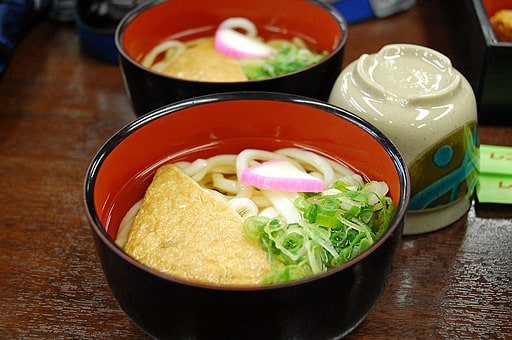
Kitsune udon can be found universally, from standing counters at train stations in Japan to Japanese restaurants all over the world. Little do people realize that when they tuck into their bowls of kitsune udon, they are enjoying a dish that can trace its origins all the way back to offerings of fried mice.
Sources:
Fushimi Grand Shrine, Toyokawa Inari, too many Japanese web pages to list, and 35 years of living in Japan.
All photos by the author unless otherwise stated. Sketch of Dakini-ten based on an image found in the 18th century Butsuzō Zui book of Buddhist Deity illustrations, drawn by the author.
If you have questions about Japan or suggestions for articles, please add them in the comments. For more photos and information on Japan, follow me on instagram at: https://www.instagram.com/more_than_tokyo/




